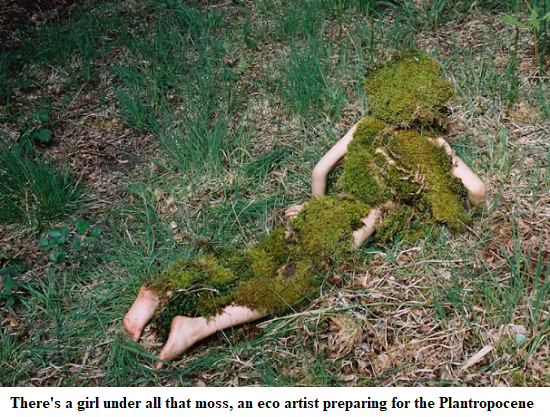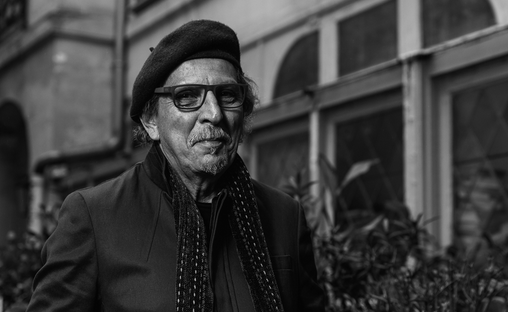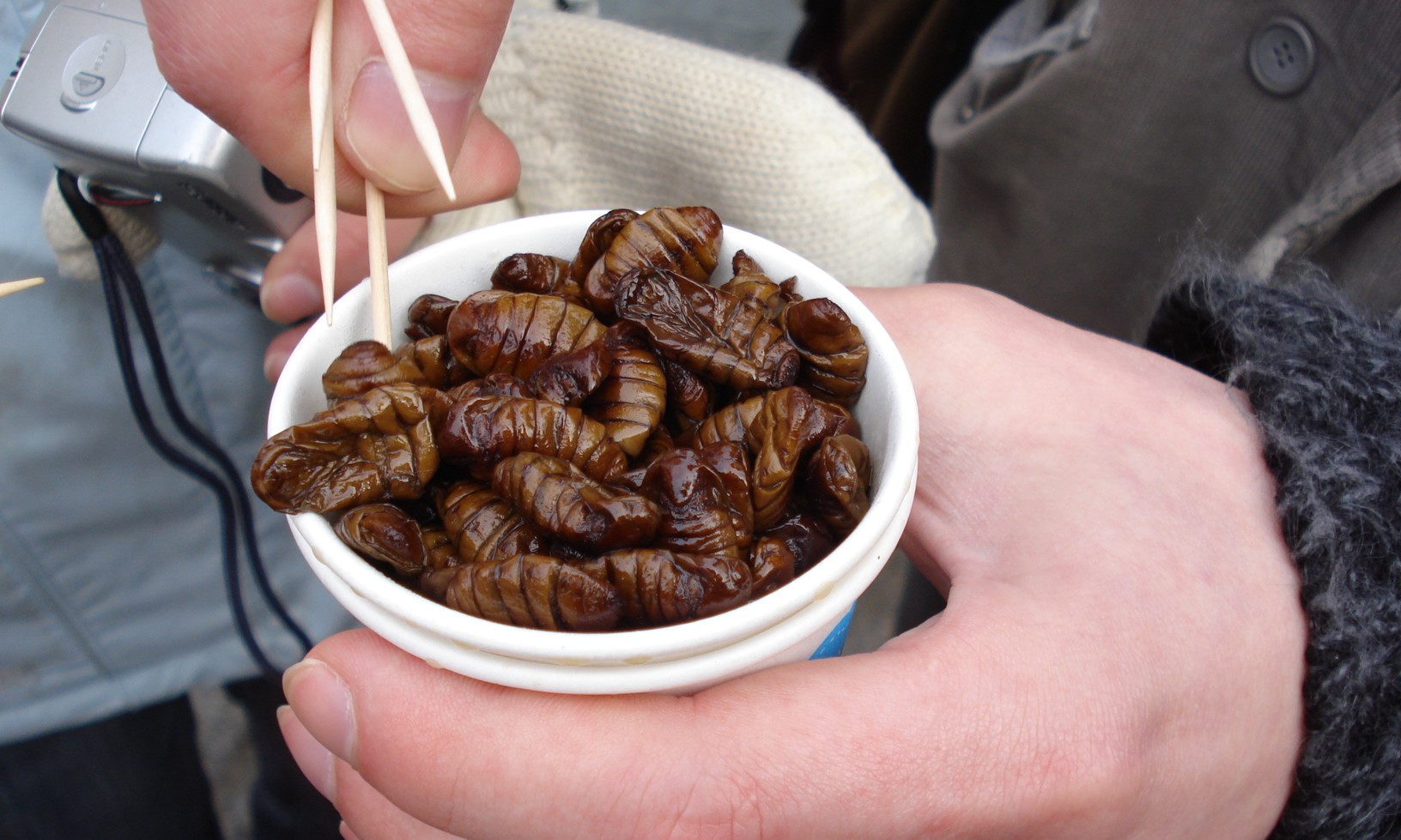
What Green Academics Do Instead of Work

Excitement is building at Sydney University as each day brings its 8000 academics and 75,000 students one sleep closer to their two-day climate-crisis spectacular, namely “Nature Feelz (sic) Symposium: Perspectives and Reflections on Ecological Emotions”. The symposium, from December 5-7, is convened by the university’s Dr. Blanche Verlie, Dr. James Dunk, Professor Danielle Celermajer[1], Associate Professor Paul Rhodes and Associate Professor Rosanne Quinnell.
This symposium is part of the university’s massive Ecological Emotions, Feelings and Affects research project.[2] Academics globally can submit symposium papers and talk proposals to Sydney University by July 31. That’s in just a few weeks so, scholars, get your skates on! Your guidelines (emphasis added):
As interconnected biodiversity, climate, water and related socio-ecological crises intensify around the world, experiences of ecological distress are proliferating. Variously termed solastalgia, climate anxiety, or ecological grief, these multifaceted experiences of loss are becoming more common, and are being articulated and shared, but they are also significantly differentiated.
This is particularly the case for many young people who, from early on, have been conscious of the insecurity of their ecosystems, the transience of other species, and their own profound vulnerability.
All of this would be almost prosaic by now – a well-known narrative – were it not so visceral, and so wrenching. ..
… Affective ties with other beings have always been a core part of human experiences, despite colonial-capitalist-patriarchal extractivism which has denied, denigrated and punished emotional engagements with the environment … Surviving and resisting the violence of colonial forces, Indigenous peoples have developed powerful languages of ecological grief and practices of survivance.
But extractive cultures are not unemotional either. They prioritise and normalise certain emotions which benefit particular stakeholders, as systemic climate denial exemplifies.
Assuming you’re not a climate denialist, you’ll be delighted to learn that the convenors are fully inclusive, saying,
15-minute presentations are the standard. Alternative formats, including poetry, flashtalks, walk-shops [sic] and roundtable discussions, are encouraged and we will do our best to accommodate them (including through longer time slots as required).
The convenors spell out the symposium theme:
Different emotions and affects, mobilised in different ways by different people, will play critical roles in whether this moment of planetary change leads towards ‘the Anthropocene,’ or somewhere more promising (the ‘Symbiocene,’ ‘Planthropocene,’ ‘Chthulucene’ or otherwise). As scholars, activists, citizens and community members, we want to take stock of how diverse humans are creating, experiencing, suppressing, making sense of, managing, preventing, intensifying, and resisting ecological distress. We are also interested in what it would mean to consider the ecological emotions of beings other than human
The “ecological emotions” of koalas, eels and huntsmen spiders, for instance?
First things first. Unless you are Sydney University-educated, you must surely be wondering about the ‘Symbiocene,’ ‘Planthropocene,’ and ‘Chthulucene’. My research suggests some aspects may cause you distress or are Not Safe For Work. There’s nowhere to hide at Quadrant OnLine.
The Symbiocene
This is a concept pioneered by the internationally-famed Dr Glenn Albrecht, along with his term “solastalgia” meaning inconsolable pre-traumatic stress over the imminent climate apocalypse. Dr Albrecht retired from sustainability pieties at Murdoch University in 2014 and, according to wiki, is an honorary fellow in Sydney University’s School of Geosciences. He has footnoted himself as “freelance environmental philosopher and farmosopher and has pioneered the domain of psychoterratic or psyche – earth relationships [earth related mental health conditions]…”

Dr Albrecht (above) has won an impressive array of taxpayer-funded grants for his transdisciplinary research into things like climate change and “social and ethical aspects of the thoroughbred horse industry worldwide.”
As for his ‘Symbioscene’, he wrote in 2019 that this is to be led by the teenage followers of Greta Thunberg who comprise his “Generation Z”. The “Z” teens
are characterised as having a broad global outlook, no current investment or employment chains and a highly nuanced, critical perspective on the use of social media and the role of information dissemination within it.
I assume Glenn means that the teens are still sponging off mum and pop and are spending the parental largesse on iPhone 13s rather than saving for a house deposit.
Dr Albrecht continues,
It is no exaggeration to say that within Gen Z there is now the vanguard of a global movement challenging all the forces that are causing humans to commit climacide and ecocide. In addition, our wise teenagers now know that the climate crisis is an integral part of a much bigger crisis.”
I would have thought “wise teenagers” an oxymoron, but not Dr Albrecht, who writes that we oldies are to unite with those post-puberty pandits “to form Generation S – a force to combat corporate gigantism and to shape cultural and social revolutions.” Generation S in turn”will lead the rest of humanity into the Symbiocene … While the Anthropocene is generating despair and desolation, the Symbiocene gives generously of hope and optimism”. The Symbioscene involves “a new epoch” to achieve
a complete change of the biophysical and emotional foundations of society… The momentum created by Gen Z is now unstoppable … In addition, marginalized groups within the Anthropocene, including LGBTQIA, indigenous groups and subsistent people in the so-called developing world, have every reason to join this movement…
The most urgent tasks for Gen S will be to protest and fight against gigantism. By gigantism, I mean the dictatorial governments of nation states and corporate rulers that exercise authoritarian and totalitarian control over almost all aspects of our lives. The globalised system of production, transport and consumption is run by a powerful elite of wealthy individuals at the head of the command economies, monopolies and oligopolies that rule the world
It is these powerful, gigantic bodies that are in control of the Anthropocene and the way it is evolving as a psychopathic juggernaut … To achieve this end, the Symbiocene will have to be initiated by protesters, activists and hacktivists. Everything, from how we conduct politics to how we eat and live, will have to be disrupted … As Gen S dismantles gigantism, at the same time they need to be furiously building a new economy… Gen S will become technological “terroirists” [sic]and sumbiofacts will replace artifacts.”
I hope you’re staying with me so far.[3]
Human reproduction will be voluntarily tailored to the limits of place and productivity.
That is not the Not Safe For Work bit I mentioned earlier, if you’ve been reading out of prurient interest.
The gender sharing of the socialisation of children will become the norm and symbio-literate children will play a vital role in the further development of the Symbiocene … The Baby Boomers have set up and now enforce dependency on centralised energy-systems. For safe, just and pollution-free energy, Gen S will dismantle the current form of energy provision and the power structures that operate and own it … Many of these renewable energy systems are already in existence with an energy delivery cost structure lower than that of finite, high-risk polluting alternatives such as coal…
Regenerating soil by rebuilding symbiotic, living soil communities will be labour intensive but immensely satisfying. Bees will flourish and their buzzing will be a sign for all that food production without the ‘cides’ is once again life-affirming. Gen S will ensure there is no insectageddon.
In joining Gen S, as their last act of generosity on Earth, the Boomers will achieve a degree of clemency … The acolytes of the Anthropocene will be “on the run” by the 2070s and the Symbiocene on the rise.”
To sum up the promising Symbiocene element of Sydney University’s forthcoming symposium, I’d just say the above sort of deep thinking is what makes the $14,630 a year fees of a Sydney University arts student worth paying for.[4] And now for my research on…
The Plantropocene (NSFW)
My first googled hit on “Plantropocene” was an article in an Italian arts magazine, Nomad Lampoon. The article by Bianca Lee Vasquez is titled “Nudity: the flesh, the body, and the divine in the character of Planthropocene [it seems to have at least three spellings including Planthroposcene].” I had to look away hastily as the piece is illustrated by three ladies including Ms Vasquez in their birthday suits. A less confronting illustration, reproduced atop this page, of the Plantropocene involves a single prone unclothed lady, maybe Ms Vasquez, who is covered (mostly) with moss. She writes,
Body is sacred, nudity is art, and nature is a living being. Bianca Lee Vasquez seeks the veracity and the reverence nature holds with living beings: «We need to see divinity in one another.
Miami-born and Paris-based, Ms Vasquez practices Mesoamerican and Inca rituals derived from her Cuban-Ecuadorian roots. She grew up in a practising Christian family who gave her full-on Biblical readings and exegesis. She then “left the job that firmed up her income” to artistically tackle
the thousands of years our society has put up with patriarchy. The female body has been suppressed and measured to a scale of how it weighs value, bears desirability, and can be of use to men.
In 2015 she embarked on a career as a nude performance artiste, and after six years plucked up the courage to “come out” to her parents. She doesn’t tell us how they reacted, but after in-depth study of the Anthropocene and the Plantropocene, Ms Vasquez
takes part in her photographs as a woman who decorates her body with tendrils while she lies down on a wooden bench with her eyes closed or as she looks at the camera with her hands grazing on the leaves.
There’s plenty more like that. If I were still an undergraduate, I’d sign up for Sydney University’s Plantropocene theorising in a flash.
Don’t get me wrong, the Plantropocene is a serious branch of the university world’s taxpayer-funded contribution to human betterment. The movement, as reverenced during Sydney University symposiums, was founded by Associate Professor Dr. Natasha Myers, of York University, who cultivates a wild head of hair and a roguish grin:
Natasha leads us to a world where magic happens through our active collaboration with plant kin. Beyond appreciation for plants, Natasha shares the importance of experimenting with the playful work of plant embodiment and seeding “plant-people conspiracies.” How can these connective practices provide diverse ways of knowing through a boundary-breaking experience?
[Her] current ethnographic projects speculate on the contours of the Planthroposcene, with investigations spanning the arts and sciences of vegetal sensing and sentience, the politics of gardens, and the enduring colonial violence of restoration ecology. Since 2015 she has been working with dancer and filmmaker Ayelen Liberona on Becoming Sensor, a research creation project to invent protocols for an ungridable ecology of the happenings taking shape across ancient and urban lands in Toronto.
The Chthulucene
The Chthulucene, since you asked, is a new epoch,
where refugees from environmental disaster (both human and non-human) will come together. This is a time when humans will try to live in balance and harmony with nature (or what’s left of it) in ‘mixed assemblages’.
That’s the definition provided by some entity called “Southern Fried Science”. We learn via symposium co-convenor Dr Verlie’s peer-reviewed scholarship – Becoming Researchers: Making Academic Kin in the Chthulucene that researchers covet
a form of refuge from academic stressors, creating spaces for ‘composting together’ [no misprint] through processes of ‘decomposing’ and ‘recomposing’. Our rejection of neoliberal norms has gifted us experiences of joyful collective pleasures.
I hope your curiosity about these three promising eras of the 2070s (as viewed by Sydney University) is fully satisfied. As a proud graduate of UWA (poetry major, 1964), why don’t I myself submit a paper to this important symposium in their suggested poetic format? Here goes:
What is to be done?*
We’re done for in the Anthropocene
I don’t want a scene
But Dr James Dunk
Is in a funk[5].
That’s two rhymes out of the way.
What rhymes with Chthulucene?
I’ll work it out another day.
*Acknowledgement to Mr V.I. Lenin.
Tony Thomas’ latest essay collection “Foot Soldier in the Culture Wars” ($29.95) is available from publisher ConnorCourt
[1] Professor Celermajer is a regular on RN’s The Minefield with Waleed Aly and Scott Stephens and The Philosopher’s Zone. Her latest book, Summertime, is blurbed, “At once a howl in the forest and an elegy for a country’s soul, these meditations are lyrical, tender and profound.”
[2] The project considers the multiple geographical (embodied, local, global) and temporal (past, present, future) scales of ecological feelings; their social and political dimensions; and the relationships they emerge from and contribute to. We seek to develop rich accounts of experiences, scholarly reflections on the cultural implications of these experiences, and tangible policy recommendations. Common themes include climate grief, eco-anxiety, hope, mental health and wellbeing, activism, community, denial, and resilience.
[3] Symbiocene food will be produced within a system we could call sumbioculture. Those who eat such food can be called sumbiovores.
Current important choices such as vegetarianism and veganism remain, but they too will respect the higher order ethical and life imperative of the sumbios, or living together for mutual benefit.
[4] The international full-fee cost is $45,000 per year — and about a quarter of the university’s BA students are international.
[5] Dr Dunk: “But the climate crisis might prove more intractable than the nuclear threat. Prevention of nuclear war requires sustained commitments by world leaders. Public pressure can be brought to bear directly on them. [Just ask Vlad Putin about that]. Prevention — or, at this point, mitigation — of climate change requires fundamental restructuring of all societies.”
Academics and others who dare to question the majority view are brutally told the science has been settled. Many such dissenters from catastrophist orthodoxy have lost their jobs, been denied promotion, or subjected to constant harassment and ridicule. This not the way science should be done
Aug 25 2024
3 mins
There's a veritable industry of academics raising alarm about how global warming and a polluted, dying planet will leave humanity and the animal kingdom in such a state that cannibalism will be a matter of survival. I'll spurn schoolyard puns and cheap gags except for one, and that by way of good advice: don't give them a big hand
Aug 09 2024
13 mins
I thought initially that this topic was a bit of fun. But it turns out that entomophagy, as the eating of insects is called, is an essential component of the Western lemmings' race to net-zero. Need it be said that one of the biggest and most enthusiastic lemmings is our very own climate crazies at the CSIRO?
Jul 31 2024
15 mins







